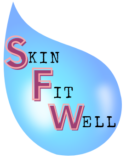Acne scars can often leave behind red marks or dark spots. Discoloration of the skin can be categorized as hyperpigmentation of the skin. On the other hand, certain red spots including pink spots can be categorized as post-inflammatory erythema.
Slugging can improve post-inflammatory erythema by deeply hydrating the skin, locking in moisture, allowing the skin barrier to repair itself, and reducing inflammation.
You may be asking – What is slugging? Let’s drive into what this term means and how it can affect your skin’s erythema.
Table of Contents
All About Slugging
While it sounds a bit silly, slugging is the act of covering your skin with a thin layer of an occlusive ingredient at the end of your skincare routine to lock in moisture.
These ingredients include Vaseline, ointments, and other products that contain thick waxes and moisturizers.
The idea is that a thin layer of an occlusive ingredient will help to hydrate the skin by preventing transepidermal water loss, which is the loss of water content in the skin.
You only need a small amount of the inclusive ingredient to cover your skin. A pea-sized amount will do.
Occlusives
You may be wondering what exactly an occlusive is.
Occlusives are skincare ingredients that are usually thick, have wax-life consistencies, and protect the skin barrier to prevent water from escaping the skin.
They essentially cover up the skin and keep all the moisture and hydration within the skin. Kind of like an invisible bandaid.
I wrote an in-depth post on occlusives and how they can benefit your skin.
When To Slug
Slugging should be done once per day, at nighttime, after your evening skincare routine.
Once all of your products have been applied, a thin layer of Vaseline can be used across the face. You can apply this occlusive ingredient everywhere, or just to certain parts of the face, such as around the eye area, where the skin is thin and sensitive.
Slugging can do wonders for the skin, especially when the skin is dehydrated or extremely dry and flaky.
Once you take care of the skin with a good moisturizer, topping the skin with a thin occlusive layer can help to soften the skin cells even further and prevent flaking from occurring.
This is great to introduce to your skincare routine when you are experiencing a damaged skin barrier, cold weather, and acne breakouts.
Post-Inflammatory Erythema

Post-inflammatory erythema is the result of slight damage to the tissues in the skin that ultimately affects the capillaries.
It presents itself as redness in the skin that fades when physically touched.
This is a defining characteristic of post-inflammatory erythema, and what sets it apart from hyperpigmentation or scarring.
When the skin is pressed, the pink color of post-inflammatory erythema fades away, and then returns shortly after. This is because it is not a scar or discoloration of the skin, it is due to the redness from the capillaries underneath the skin.
How Long Does Post-Inflammatory Erythema Take To Go Away?
Unfortunately, this skin redness can last anywhere from a few weeks to a few months after experiencing an acne breakout, especially an inflammatory acne breakout.
In order to heal the skin more quickly, you need to focus on nourishing and repairing the damaged skin barrier.
This includes adding multiple hydrating ingredients to your routine, and one of the best ways to improve post-inflammatory erythema is through the use of an occlusive ingredient.
How Slugging Can Improve Post-Inflammatory Erythema
Any type of facial erythema is going to be exacerbated by certain environmental stressors.
These stressors include things like UV damage, pollution, and any type of physical aggressors, such as abrasive towels, harsh cleansers, and other drying skin care ingredients.
This is why it is so important to focus on moisturizing ingredients in order to reduce redness and irritation often seen in post-inflammatory erythema.
When the skin is exceptionally dry and dehydrated, it creates a dull look in the skin which actually makes the redness look worse.
When added to your routine, slugging can improve post-inflammatory erythema by softening the skin cells and locking moisture in the skin, which helps to speed up the healing process and lighten the erythema.
Do Retinoids Help?
Retinoids are great treatments for acne, aging skin, skin roughness, and pigmentation.
Retinoids work to increase cell turnover. They do so by binding to retinoid receptors on the surface of the skin, and activating genes that play a role in exfoliating dead skin cells.
This way, the dead skin cells can be shed faster.
Because post-inflammatory erythema is caused by skin redness, retinoids may not do much for the erythema.
Instead, retinoids can slowly slough off the dark pigmentation of the skin cells that can be found in people suffering from post-inflammatory hyperpigmentation.
Those experiencing post-inflammatory erythema may not benefit from using retinoids as the issue is not pigment related, rather it is underlying redness from the inflammation caused by acne.
What Are The Best Ingredients For Post-Inflammatory Erythema?
The most important ingredients to focus on when treating post-inflammatory erythema involves hydrating products with moisturizing ingredients.
You need to focus on repairing your skin barrier, as an acne breakout is an infection that causes inflammation of the tissues and can cause textural issues, redness, irritation, and skin dryness.
All of these things can make the erythema worse.
Therefore, you want to make sure that you’re incorporating humectants and emollients into your routine. A few ingredients to incorporate include hyaluronic acid, niacinamide, and ceramides.
No matter what ingredients you incorporate into your routine, you want to end your nighttime skincare routine by slugging.
All of those ingredients will have a better chance of sinking into the skin and protecting the skin’s barrier once it is topped by an occlusive ingredient.
References

